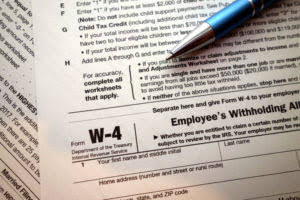
Overhead costs typically include rent, utilities, insurance, payroll and benefits for staff, marketing and advertising costs, software and technology expenses, and miscellaneous expenses. By analyzing these costs on a monthly basis, gym owners can identify areas where savings can be made or investments can be optimized, ultimately maximizing profitability. When it comes to owning a gym, there are certain essential expenses that every gym owner should be aware of. These include rent and utilities, insurance, payroll and benefits for staff, and maintenance and repairs. Rent and utilities can be a significant monthly expense, and negotiating favorable terms with landlords and exploring energy-saving initiatives can help reduce these costs. Insurance is essential to protect the gym from unexpected events, such as accidents or property damage.
Navigating Tax Obligations as a Gym Owner

If you buy health insurance through the federal insurance marketplace or your state marketplace, any premiums you pay out of pocket are tax-deductible. If you are self-employed, you can deduct the amount you paid for health insurance and qualified long-term care insurance premiums directly from your income. If you want to get organized about the different types of expenses you should include in your budget, our free printable Change Your Money Mindset workbook is a great place to get started. The downloadable budget planner and a short email series will help you explore your history with personal finance while encouraging you to set some attainable life goals that will bookkeeping for personal trainers keep you motivated as you go. Well, you can tell them that last one, but you’re still going to need to buy them new jeans anyway. With non-recurring expenses, it’s more about planning to make sure these expenses don’t feel like whammies when they hit.
Fixed vs. Variable Expenses: The Difference and How to Budget for Both

For example, if utilities costs are significantly higher than projected, energy-saving measures or negotiation with service providers may be required. Additionally, gyms often offer personalized services like personal training sessions or specialized classes such as yoga or spin classes. These services are typically charged separately and contribute to the overall revenue generated by the gym. If you’re not confident in your ability to handle your https://www.bookstime.com/ gym’s accounting, it might be worth hiring a professional accountant.
Can I claim gym on expenses?
- You can claim an amount for fees paid in 2016 for the cost of registration or membership for your or your spouse’s or common-law partner’s child in a prescribed program (see the next section) of physical activity.
- Additionally, other KPIs like customer churn rate, revenue growth rate, and profit margin are essential for assessing overall financial performance and identifying areas of improvement.
- Marketing and advertising costs are an integral part of running a successful gym.
- Open a savings account or open a Certificate of Deposit (see interest rates) and start saving your money.
- If you use apps like Renpho to track your clients’ body composition stats, include those here as well.
Accurate payroll management is crucial, not just for your employees’ satisfaction, but for tax purposes too. Invoices, receipts, payroll details, and tax forms should be systematically stored. Today, there are many software solutions that can help you with digital record keeping. Depending on your location, you may need to collect sales Online Accounting tax on certain goods and services sold, like merchandise or personal training services. You’ll need to understand your local sales tax laws and set up systems to collect, report, and pay these taxes. Staying fit and healthy is crucial for your demanding job, and understanding these tax benefits can help you make the most of your health and finances.

If you are self-employed and can prove that your gym membership is a necessary part of maintaining your business, there might be a case for deductibility. For example, if you are a fitness instructor or personal trainer and use the gym facilities to train clients or create content for your business, part of your gym membership could be considered a business expense. Marketing and promotional expenses are a crucial investment in growing your gym membership base. From digital marketing campaigns and social media advertising to local print advertisements and promotional events, reaching and attracting potential members requires a strategic and budgeted approach.
- This concept most commonly comes up in business, but it can also inform your personal budget.
- Key performance indicators (KPIs) provide valuable insights into the financial health of a gym and help owners make informed decisions.
- Overall, it’s crucial for aspiring gym owners to factor in state-specific variables like labor costs, real estate prices, and even local fitness trends when planning their budgets.
- However, within each category are subcategories specific to gyms that provide more detailed information about different revenue streams or expense types.

